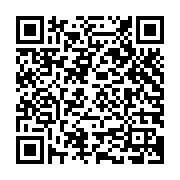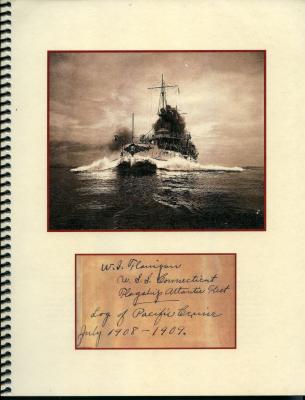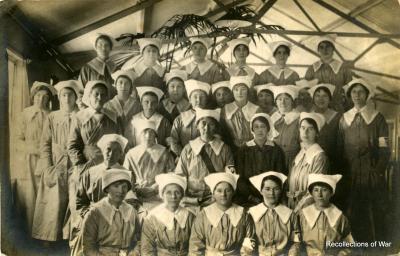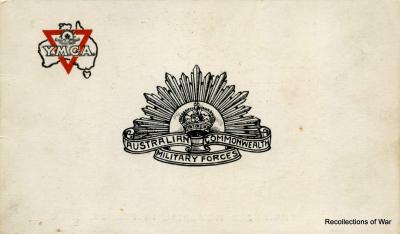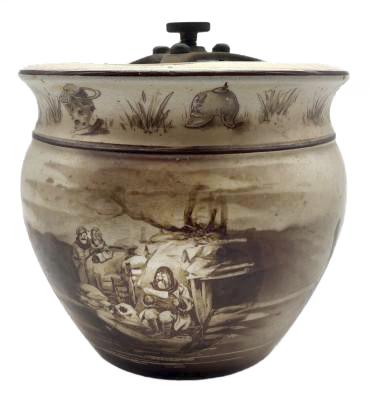Boomerang purchased by Winfield Ira Flanigan in Sydney during visit of Great White Fleet, 1908
c. 1908Traditional Australian aboriginal hand carved timber boomerang. The upper surface is convex while the under surface is flat. The angle of the two arms is around 120 degrees.
There is evidence of darkening on the edges of the boomerang, perhaps indicating that heat was used when bending the timber into shape.
Remnants of the carving strokes are visible on both sides of the boomerang. The timber is otherwise smooth and shiny and there is no additional decoration.
There is a bit of damage on the top of the curve which may be explained by the purchaser attempting to throw it. There is also some sort of residue on the underneath which may have formerly held information about the maker or seller.
When this item was purchased in 1908, traditional Aboriginal boomerangs were still a vital part of Aboriginal culture and had a wide range of uses beyond just being a throwing weapon. They were used for hunting, fishing, as battle clubs, and even as musical instruments. Boomerangs were also used as fire starters, digging sticks, and for ceremonies.
Boomerangs were either returning or non-returning. The former could be thrown to simulate a hovering hawk, frightening birds into nets or making them vulnerable to non-returning boomerangs. The latter were used to hunt birds, fish, and other animals.
This particular boomerang was one of two purchased by U.S. Navy sailor, Winfield Ira Flanigan, on 23 August 1908 when on liberty in Sydney. Winfield served on the U.S.S. Connecticut, the flagship of the American Great White Fleet.
The boomerang was purchased for our collection from Winfield's great-grandson. Other relations had produced a comprehensive bound document in 2003 including diary entries and photographs taken by Winfield on the Pacific Cruise July 1908 - February 1909. This was purchased with the boomerang, giving an insight into life on one of the vessels on this worldwide tour. It also gives provenance, as Winfield wrote of buying the boomerang in his diary.
Details
Details
Related Objects
Related Objects
More items like this
Other items from Recollections of War
- Winfield Ira Flanigan - Log of Pacific Cruise on U.S.S. Connecticut - Great White Fleet 1908
- The Methodist Church of Australasia booklets issued to A.I. F. Soldiers in WWI
- WWI patriotic good luck charm - black cat
- WWI Australian Y.M.C.A. Service medal awarded to female employees at Aldwych Theatre, London
- WWII 'Make Do and Mend' pantyhose repair kit in form of doll
- WWI photographic postcard of a group of Y.M.C.A workers
- WWI souvenir card relating to the ANZAC Memorial in France
- WWI Australian Y.M.C.A 'Snapshots From Home League' enamel badge
- WWII Y.M.C.A. Scottish Branch Voluntary War Service badge
- H.M. Naval Pigeon Service aluminium message canister and form
- WWI era tobacco jar featuring Bruce Bairnsfather cartoon
- St. Dunstan's Child's Reins with Bells made by war blinded soldiers
Scan this QR code to open this page on your phone ->
